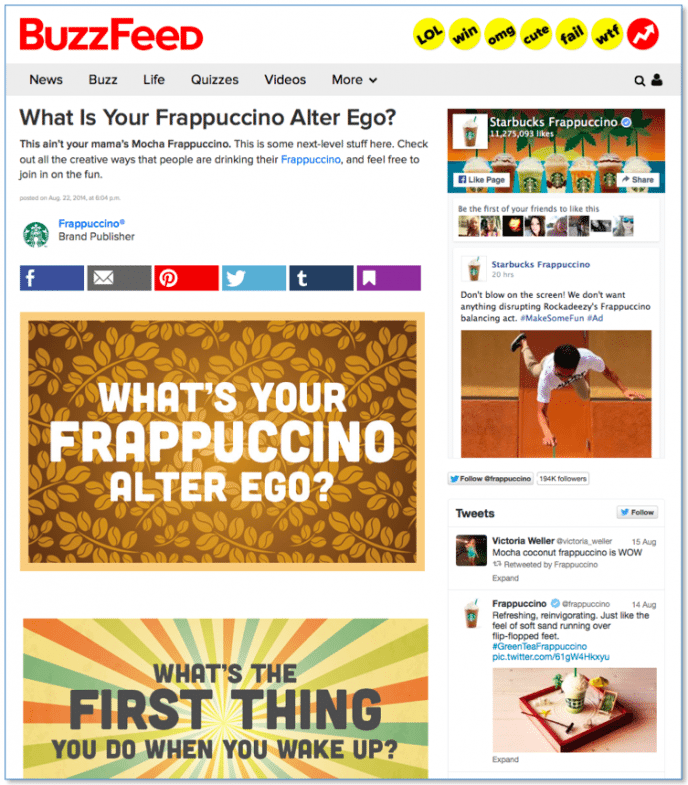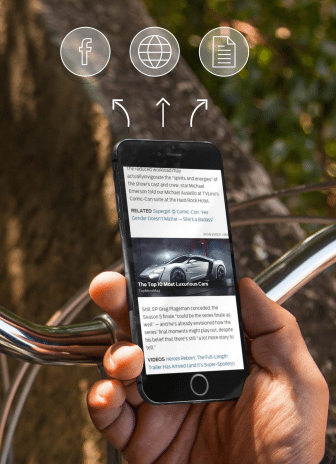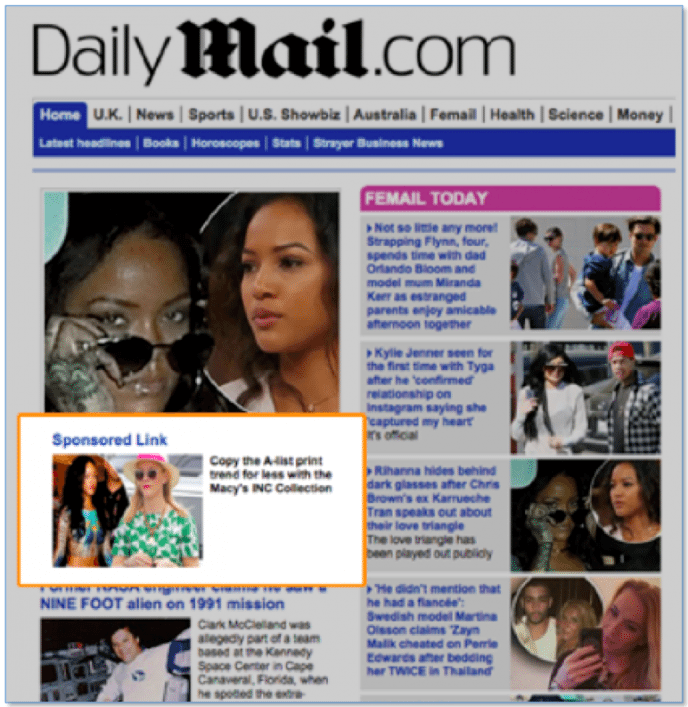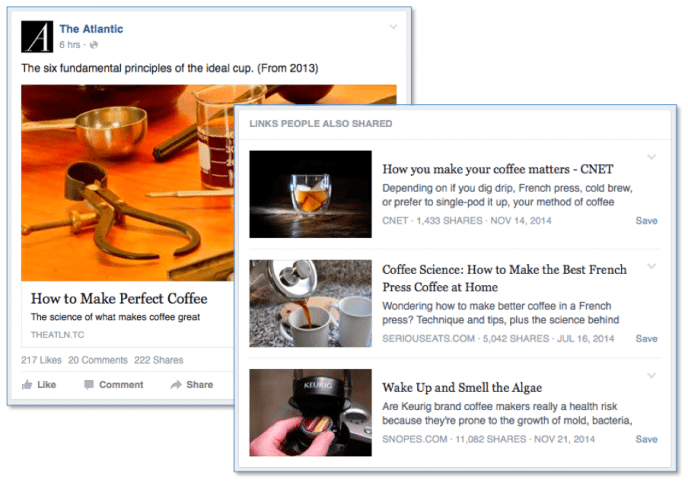In a recent post, we covered the legacy of sponsored content—from advertorials in print publications to “branded entertainment” on TV—that paved the way for today’s native advertising. But despite this long history, and the fact that most of us are exposed to native advertising every day, many people still have a narrow understanding of “native” and the many different forms it can take to help publishers better monetize their business.
By expanding our definition of native to encompass more diverse forms of branded content, publishers can tap into a multi-billion dollar market, bolster their overall businesses, and take back revenue from the industry’s “Goliath” that is commandeering too much of the digital media space today.
The Native We Know: On-Site Custom Branded Content
Most people who are familiar with the phrase “native advertising” think of it in terms of those prominent examples cited in our previous post, namely branded content on sites like The New York Times and BuzzFeed, indeed pioneers in the space. These native ads are created by an in-house studio, with content and design teams that operate independently from publisher newsrooms, but follow a similar set of standards, so that the content appears almost as if it could be editorial.
 While this form of advertising is effective, it is expensive to produce and difficult to scale. Most publishers do not have the means to hire what amounts to an entire second staff purely to create advertising content, nor the resources to sell this kind of content at the rates that would justify its creation. While larger publishers have found success with this model, when it comes to the rest of the industry, wholly bespoke native ad content is a difficult proposition to scale into a sustainable business.
While this form of advertising is effective, it is expensive to produce and difficult to scale. Most publishers do not have the means to hire what amounts to an entire second staff purely to create advertising content, nor the resources to sell this kind of content at the rates that would justify its creation. While larger publishers have found success with this model, when it comes to the rest of the industry, wholly bespoke native ad content is a difficult proposition to scale into a sustainable business.
Native ads generated in-house pose another problem for publishers: aside from the costliness of paying a team responsible for such campaigns, the time required for the creation of this content means that only so many native ads can run at any given time. Put another, over-simplified way: if a publisher has the site capacity to run 10 native ad campaigns at any given time, but the human capacity to generate only five, then 50% of its ad space is going unfilled, and at least 50% of its potential ad income is going unearned.
Fortunately, it is possible for publishers to harness the power, and profit, of native advertising without hiring a new team or accepting a loss of potential revenue.
Re-Thinking Native: Branded Content from Around the Web
Native has proven to work so well because it provides brands with a more authentic way to engage with their target audiences, through interesting and relevant content people want to read and share, within an editorial context where consumers are interested in discovering new stories. For publishers who have seen their constituents turn increasingly blind to banner ads, the content-driven nature of native means more engagement with ads, which in turn means more revenue from advertisers. Native, then, is a win-win … as long as publishers find a way to run native campaigns that can be scaled in a more cost-effective fashion.
Think about Facebook, probably the biggest native advertising company these days, already making over $10 billion a year from paid in-stream placements. Native ads appear in users’ feeds frequently as “sponsored” posts, encouraging them to “like” a page or visit a link, often with the added prompt of a friend’s endorsement. Instead of relying on an in-house team to generate content, Facebook is promoting content that already exists, providing outbound links (for now at least) to articles around the web. In essence, brands are paying Facebook for the privilege to appear in-feed, and it’s not just articles they can promote: advertisers can include links to YouTube videos, a positive Yelp review, Amazon product pages, and more.
You might have also noticed that in recent months, after you click on an article in your News Feed, you’ll return to Facebook and see a new module surfacing related links that people also shared.
Though these links are currently organic suggestions based on a user’s activity and social graph, there’s the potential for this content, too, to go native—Facebook style—incorporating paid recommendations for branded content around the web.
The digital media industry is still trying to figure out “native,” but Facebook has already generated billions of dollars from these in-feed placements. If Facebook, in a sense the biggest “publisher” in the world, considers all of this content as falling under the same native umbrella, and that model is working, doesn’t this provide an opportunity for publishers to expand their own businesses?
Taking on Facebook: On-Site Native Placements for Publishers
In order to capitalize on the opportunities around native advertising, publishers can consider running outbound native ad campaigns in the same way as Facebook, and not wait for custom content to be created within their organization.
 Prominent in-feed or mid-article placements on publisher websites present a unique opportunity for brands to reach highly engaged audiences. These readers are especially valuable to content marketers, precisely because they are more likely to be interested in discovering new stories, versus attention-strained Facebook users who are thumbing through their News Feeds.
Prominent in-feed or mid-article placements on publisher websites present a unique opportunity for brands to reach highly engaged audiences. These readers are especially valuable to content marketers, precisely because they are more likely to be interested in discovering new stories, versus attention-strained Facebook users who are thumbing through their News Feeds.
Publishers can pursue this opportunity today and build out new revenue streams by directly selling native placements to advertisers, at premium rates, linking to all kinds of external branded content from across the web. This effort is cost-effective and presents an exciting new channel for in-house sales teams to generate business, diversifying away from display ads which continue to plummet in effectiveness.
In order to better support directly-sold efforts for our publisher partners, Taboola recently introduced a white-labeled version of its discovery platform, called Taboola Native. Powered by strong personalization technology, Taboola Native is provided free of charge to our partners, supports both CPC- and CPM-based monetization models, and guarantees 100% backfill rates drawing on our vast content marketplace. For a great example of how this approach can transform your native business, check out what the Daily Mail is doing with Taboola.
While original branded content has proven to be a successful model for publishers like the New York Times and Buzzfeed, it also presents many challenges. We think there is a huge opportunity for publishers to leverage their own engaged audiences and promote branded content from across the web, taking back some of the billions of dollars in revenue that Facebook is generating in the space today.
 Whether you want to increase the amount of native advertising available on your site, or begin selling it for the first time, publishers who can look beyond the old advertorial model when it comes to native advertising will be able to implement successful, profitable native strategies that can scale quickly and create a great potential payoff.
Whether you want to increase the amount of native advertising available on your site, or begin selling it for the first time, publishers who can look beyond the old advertorial model when it comes to native advertising will be able to implement successful, profitable native strategies that can scale quickly and create a great potential payoff.
Interested in learning more about how Taboola can boost your native advertising efforts? Contact us today!
